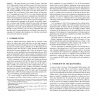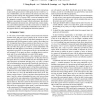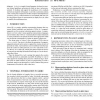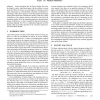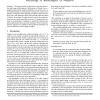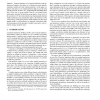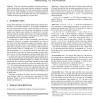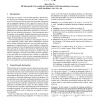ECAI
2004
Springer
14 years 5 months ago
2004
Springer
This paper presents a new model of agency, called the KGP (Knowledge, Goals and Plan) model. This draws from the classic BDI model and proposes a hierarchical agent architecture wi...
ECAI
2004
Springer
14 years 5 months ago
2004
Springer
Trust and reputation are central to effective interactions in open multi-agent systems in which agents, that are owned by a variety of stakeholders, can enter and leave the system ...
ECAI
2004
Springer
14 years 5 months ago
2004
Springer
In description logics, concrete domains are used to model concrete properties such as weight, name, or age, having concrete values such as integers or strings, with built-in predic...
ECAI
2004
Springer
14 years 5 months ago
2004
Springer
Abstract. Asbru is a complex formal language developed to represent clinical guidelines and protocols which are time- and processoriented. To facilitate and support the modeling in...
ECAI
2004
Springer
14 years 5 months ago
2004
Springer
Action formalisms like the fluent calculus have been developed to endow logic-based agents with the abilities to reason about the effects of actions, to execute high-level strateg...
ECAI
2004
Springer
14 years 5 months ago
2004
Springer
Abstract. This paper presents an approach for reasoning about action and change which appeals to the principle of Occam’s razor— roughly stating that the simplest explanations ...
ECAI
2004
Springer
14 years 5 months ago
2004
Springer
Abstract. Solution techniques for Constraint Satisfaction and Optimisation Problems often make use of backtrack search methods, exploiting variable and value ordering heuristics. I...
ECAI
2004
Springer
14 years 5 months ago
2004
Springer
This work is about the metatheory of actions, and here we address the problem of what a good domain description for reasoning about actions should look like. We state some postulat...
ECAI
2004
Springer
14 years 5 months ago
2004
Springer
ECAI
2004
Springer
14 years 5 months ago
2004
Springer
Super solutions are a mechanism to provide robustness to constraint programs [10]. They are solutions in which, if a small number of variables lose their values, we are guaranteed ...
